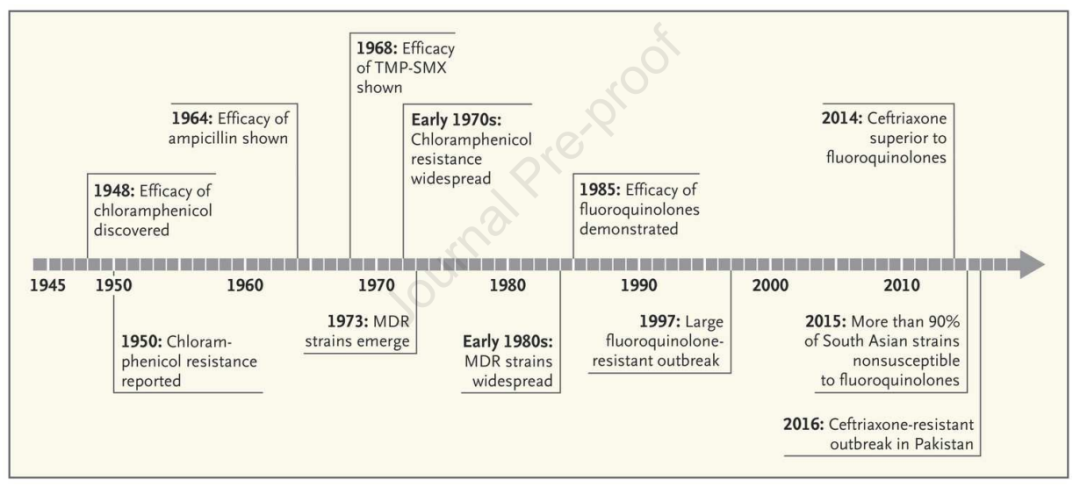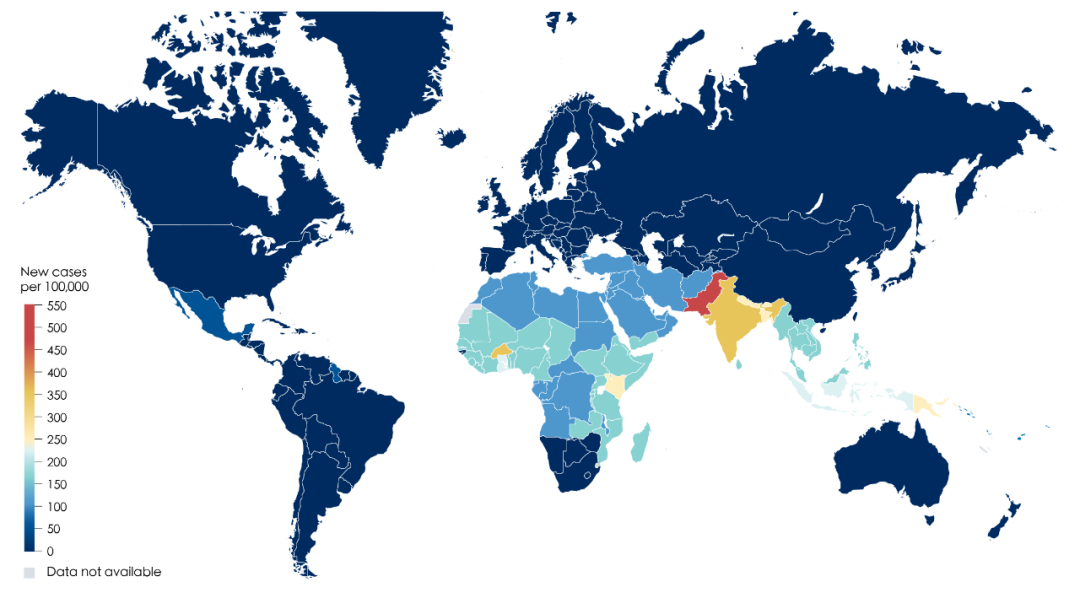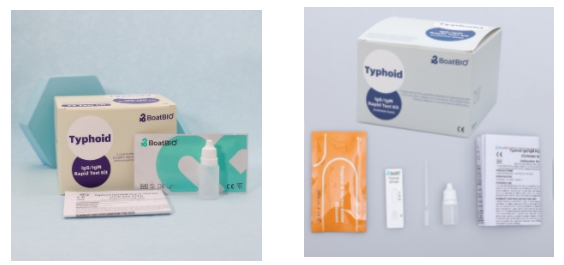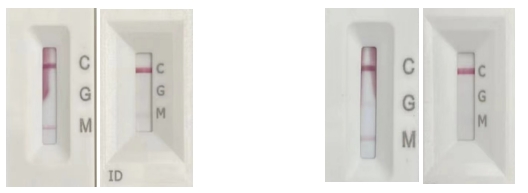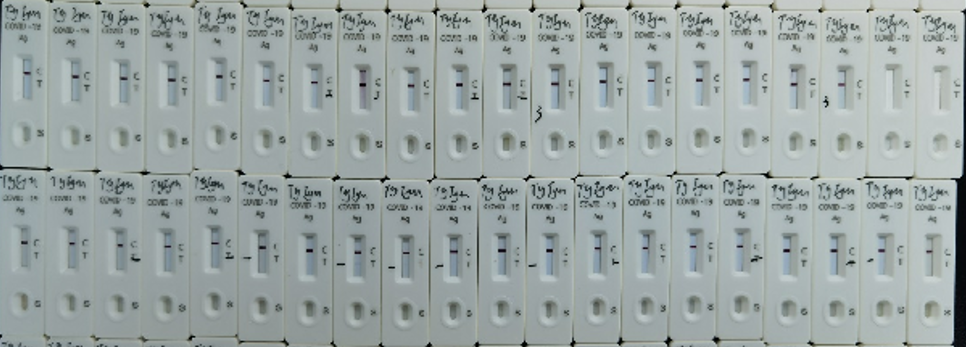Typhoid fever is an acute intestinal infection caused by Salmonella typhi, one of the infectious diseases of international concern and a global disease that mainly affects developing countries and regions, especially in places with poor sanitation and inadequate water resources. S. typhi is transmitted by the fecal-oral route, i.e., it usually infects others by ingesting water or food contaminated by the feces of a sick person or a carrier. The disease mainly invades the lymphoid tissues of the terminal ileum of the body and causes systemic infection. Although the widespread use of antibiotics has greatly improved the treatment of typhoid fever, the morbidity and mortality of typhoid fever have remained high in recent years due to the emergence of drug-resistant strains and inadequate vaccination rates. Therefore, in-depth study and effective prevention and control of typhoid fever are of great practical significance.
Shulan (Hang Zhou) | A Brief History of Typhoid Fever
Epidemiological features
Epidemiological studies have shown that the incidence of typhoid fever is closely related to factors such as population density, sanitary conditions and the level of economic development. In developing countries, typhoid outbreaks are often associated with events such as natural disasters, wars and social unrest. Humans are the sole host of Salmonella typhi (S. Typhi), which is mainly transmitted indirectly through contaminated water and food. The number and geographic representation of studies on the incidence and patient outcomes of enteric fever (typhoid and paratyphoid) has increased dramatically since 2015.In 2017, there were an estimated 10.9 million cases of typhoid fever worldwide, resulting in 116,800 deaths. Based on population-based cohort studies and national surveillance data, the global incidence of typhoid fever is estimated at 130.96 cases per 100,000 people per year.
In recent years, although the overall incidence level of typhoid fever in China has been on a downward trend, outbreaks or epidemics of typhoid fever may still occur in some areas, especially where drinking water sanitation is poor. Therefore, raising public awareness of hygiene and improving environmental hygiene, especially water and food safety, are important measures for the prevention and control of typhoid fever.
Nature Reviews Disease Primers | Global incidence of typhoid fever
Clinical performance
In terms of clinical manifestations, the duration of typhoid fever is usually 2-4 weeks, and its clinical manifestations are varied, which can usually be categorized into four phases: the initial phase, the extreme phase, the remission phase and the recovery phase.
In the early stage, the patient starts slowly, usually with fever as the first symptom, accompanied by chills, fatigue, generalized weakness, headache, dry cough, loss of appetite, nausea, abdominal pain, mild diarrhea or constipation and other manifestations. With the development of the disease, it enters the extreme stage, that is, the second to third week of the course of the disease, and the characteristic clinical manifestations of typhoid fever may appear in this stage, mainly persistent fever, and the heat type is often in the form of arrested fever, while the patient may have symptoms such as indifference, sluggishness, unresponsiveness, and hearing loss. In addition, relatively slow pulse, rose skin rash, hepatosplenomegaly and other manifestations may occur. After entering the remission phase, the disease enters about the fourth week, some of the symptoms will be relieved, but there are still temperature fluctuations, and at this stage the patient should be aware of the risk of intestinal hemorrhage or intestinal perforation. In the final stage of recovery, the body temperature begins to remain constant, the appetite begins to improve, the neurological and digestive symptoms disappear, and the liver and spleen enlargement return to normal.
It should be noted that the clinical manifestations of typhoid fever are not static, but vary according to the individual and the course of the disease. Therefore, the diagnosis of typhoid fever often needs to be made in conjunction with the results of laboratory tests.
The value of rapid diagnostic reagents for typhoid fever
1. Early diagnosis: Rapid diagnostic reagents can provide test results in a short period of time, enabling doctors to make a diagnosis at the early stage of the patient’s illness and start targeted treatment in time, effectively preventing the deterioration of the condition and the occurrence of complications.
2. Reduction of hospitalization time: Through rapid diagnosis, the time needed to wait for traditional culture results is reduced, and patients can enter the targeted treatment stage more quickly, thus shortening hospitalization time, reducing medical costs and easing the pressure on medical resources.
3. Preventing and controlling the spread of disease: Early diagnosis means early isolation and treatment, which can effectively prevent the spread of pathogens in the community and in healthcare facilities, control the epidemiological situation of disease, and protect susceptible populations.
4. Optimize treatment: Based on rapid diagnosis, doctors can choose the best treatment for patients based on the latest drug sensitivity information, which is especially important in the context of increasing resistance to antibiotics.
5. Grass-roots and on-site application: Typhoid rapid diagnostic reagents are usually designed in the form of convenient and simple operation, such as colloidal gold immunochromatography, immediate detection (POCT), etc., which can be used in grass-roots medical institutions and on-site that do not have the conditions of high-level laboratories and have greatly improved the ability to diagnose the disease in remote areas and emergency situations.
6. Public health decision-making support: The accumulation of rapid diagnostic data helps public health departments to grasp the typhoid epidemic in real time, provide early warning and intervention for disease outbreaks, and at the same time provide data support for public health policy formulation and vaccination programs.
Product Recommendation
The main difficulty in diagnosing typhoid fever is the lack of reliable and easy-to-use diagnostic tools. BoatBio has developed a rapid and sensitive IgG/IgM test for typhoid fever. The detection principle is a lateral flow immunochromatographic assay.
1. Product Description
Product Name:Typhoid IgG/IgM Rapid Test Kit
Item No.: BTT071 Sample type: WB/S/P Format: 3mm single card
BoatBio Typhoid Test Kit
2. Performance characteristics
2.1.1 Clinical Performance For IgM Test
A total of 234 samples from susceptible subjects were tested by the Typhoid IgG/IgM Combo Rapid Test and by a commercial S. typhi IgM EIA. Comparison for all subjects is showed in the following table:
Clinical Performance For lgM Test
Relative Sensitivity:97.67% ; Relative Specificity:98.0%;Overall Agreement: 97.86%
2.1.2Clinical Performance For IgG Test
A total of 214 samples from susceptible subjects were tested by theTyphoid IgG/IgM Combo Rapid Test and by a commercial S. typhi IgG EIA kit. Comparison for all subjects is showed in the following table:
Clinical Performance For lgG Test
Relative Sensitivity: 99.12%; Relative Specificity: 98.0%; Overall Agreement: 98.60%
The above results show that the sensitivity of the kit is more than 97%, the specificity is more than 98%, and the total coincidence rate is more than 97%, which is consistent with the clinical diagnosis results and has strong clinical application value.
2.2.1 Positive sample testing
From the results of the positive samples, BoatBio has better sensitivity.
2.2.2 Negative sample testing
Testing 150 healthy human serum samples, from the test results no false positive appeared, in line with the test requirements
How to go about preventing and controlling typhoid infection?
The key to preventing typhoid fever lies in improving environmental hygiene, strengthening the management of drinking water and food safety, raising public awareness of hygiene and promoting vaccination. By improving sanitation, the transmission route of Salmonella typhi will be reduced; food safety regulation will be strengthened to prevent contaminated food from entering the market; public awareness and preparedness for typhoid fever will be raised to reduce the risk of infection; and vaccination will be promoted to enhance the immunity of the population and reduce the incidence of the disease.
https://www.boat-bio.com/salmonella-typhoid-antigen-rapid-test-kit-2-product/
Post time: Mar-14-2024
